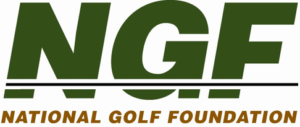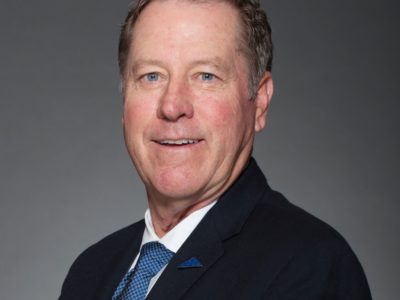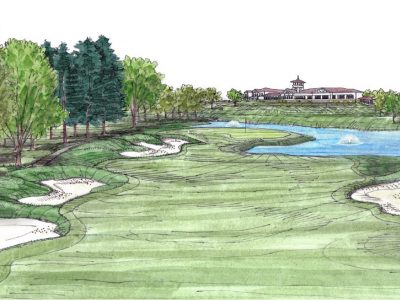From TopGolf, BigShots and Drive Shack to Indoor Simulators, the Golf Market is Growing
By Adam Stanley
Story and photos edited for space and reprinted with permission from the original publication: The National Golf Foundation
Take a quick stroll through any Topgolf location — or scroll through its Instagram feed — and you’ll see golf.
Sort of.
More denim than Dockers, more sundresses than Scotty Cameron, it’s certainly a different kind of audience than what the sport is used to seeing. And it’s growing.
The participation base for off-course forms of golf increased almost 10% in 2018 to an estimated 23 million people. The year before, the off-course participation number increased 7% to 21.2 million. With its upward trajectory, almost as many people now participate off-course as play traditional, green-grass golf (24.2 million).
So, how much runway is there for these off-course facilities?
That remains to be seen, says ClubCorp CEO David Pillsbury, who announced a joint venture with BigShots Golf in last year. BigShots is another entrant in the golf-entertainment space, offering  free-standing outdoor franchises along with an indoor franchise product that can be installed as a single “tee box” or as multiple units in bars, malls and other retail venues. Like Topgolf, it provides new-age technology (Doppler radar shot-tracking) along with full-service food and beverage options, sports bars, music and televisions, and private event space.
free-standing outdoor franchises along with an indoor franchise product that can be installed as a single “tee box” or as multiple units in bars, malls and other retail venues. Like Topgolf, it provides new-age technology (Doppler radar shot-tracking) along with full-service food and beverage options, sports bars, music and televisions, and private event space.
“I don’t think that anybody really knows yet what the demographic formula is that correlates to a saturation point,” says Pillsbury. “We’re going to find out here over the next few years what that looks like. Having said that, I think there’s plenty of room. As long as it’s fun, it’s entertainment, it’s fast, casual dining and an entertainment environment… it’s good for the game.”
Topgolf and BigShots are joined in the golf-entertainment space by Drive Shack, Flying Tee and a growing number of regional imitators. Commercial simulator businesses are popping up in cities around the country and throughout the world – in South Korea, for example, there are more rounds of indoor golf played than outdoor. In a time when land in urban areas is at a premium and free time has more and more competition, these indoor golf facilities are an increasingly-popular form of engagement.
All of these facilities have similar potential – providing a fun, non-intimidating on-ramp to attract people to the game and, hopefully, create more golfers. No matter how they play, the industry is eager for the next generation to carry the torch, drive revenues, and let the game have a positive impact on their lives.
Troon Golf Executive Chairman Dana Garmany, who oversaw the largest golf management company in the world for almost 30 years, counts his wife among those who got intimidated on a real golf course but felt comfortable at Topgolf.
“She went to the first tee at Pebble Beach as a new player, looked around all the people and said, I’m not hitting it.’ She picked it up, walked out in the middle of the fairway and dropped it. That’s the intimidation factor in golf,” he says. “We’ve got to make sure it’s more of a hit-and-giggle thing; like nobody cares. She now plays in a group called ‘Five and Wine.’ That’s all she wants to do. We have to make sure that group of people isn’t looked down on because they’re not playing 18 holes and posting a handicap.
“They’re still paying money and they’re out there enjoying it, so what do we care?”
Among Topgolf’s guests who are non-golfers, 94% say they feel comfortable at a Topgolf venue. Whether it’s kids, women or newcomers who have never swung a golf club before, this type of facility provides a fun, welcoming on-ramp to the game.
NGF research finds that off-course is not cannibalizing on-course, rather the traditional and modern forms of golf are complementing one another. A recent NGF study found that 75% of non-golfers who visited Topgolf said they’re interested in playing on a course. And 29% of golfers say playing at Topgolf leads them to play more traditional golf.
The intent is to not only engage with current golfers, but to introduce more non-golfers to hitting a golf ball with a golf club in an entertaining and non-intimidating format. There are 14.7 million non-golfers who say they’re “very interested” in playing golf on a course, with another 32.7 million who say they’re at least somewhat interested. The popularity of off-course forms of golf has contributed to this growing latent demand pool.
“Topgolf is driving interest in huge numbers for golf. But the challenge from my perspective is that the golf industry, for the most part, hasn’t really done anything differently to convert interest to trials. That’s what we’re trying to change,” Pillsbury says. “We can’t change what everybody else is doing, but we can change what we’re doing. That’s what we’re focused on because we think there is a very unique, unprecedented opportunity to take advantage of surging interest in golf and converting that to trials.”
The U.S. is the best-supplied golf market in the world, with almost 17,000 golf courses. More than 4,000 of them opened during a 20-year building boom from 1986 through 2005 that over-saturated the market.
So, will the current off-course building boom eventually outpace the demand for these kinds of alternative golf offerings? It’s still far too early to tell, and the industry overall seems more focused right now on whether off-course participation can boost on-course play.
NGF Takeaways
- Almost as many Americans play off-course forms of golf as traditional green-grass golf. Off-course participation increased almost 10% in 2018 to an estimated 23 million people. There are 24.2 million on-course golfers.

- Off-course golf facilities can provide engaging and non-intimidating options to attract people to the game and, potentially, create more golfers. 94% of non-golfers say they feel comfortable at a Topgolf venue, for example.
- A recent NGF study found that 75% of non-golfers who visited Topgolf said they’re now interested in playing on a course.
- There are 14.7 million non-golfers who say they’re “very interested” in playing golf on a course, with another 32.7 million who say they’re at least somewhat interested. The popularity of off-course forms of golf has contributed to this growing latent demand pool.










